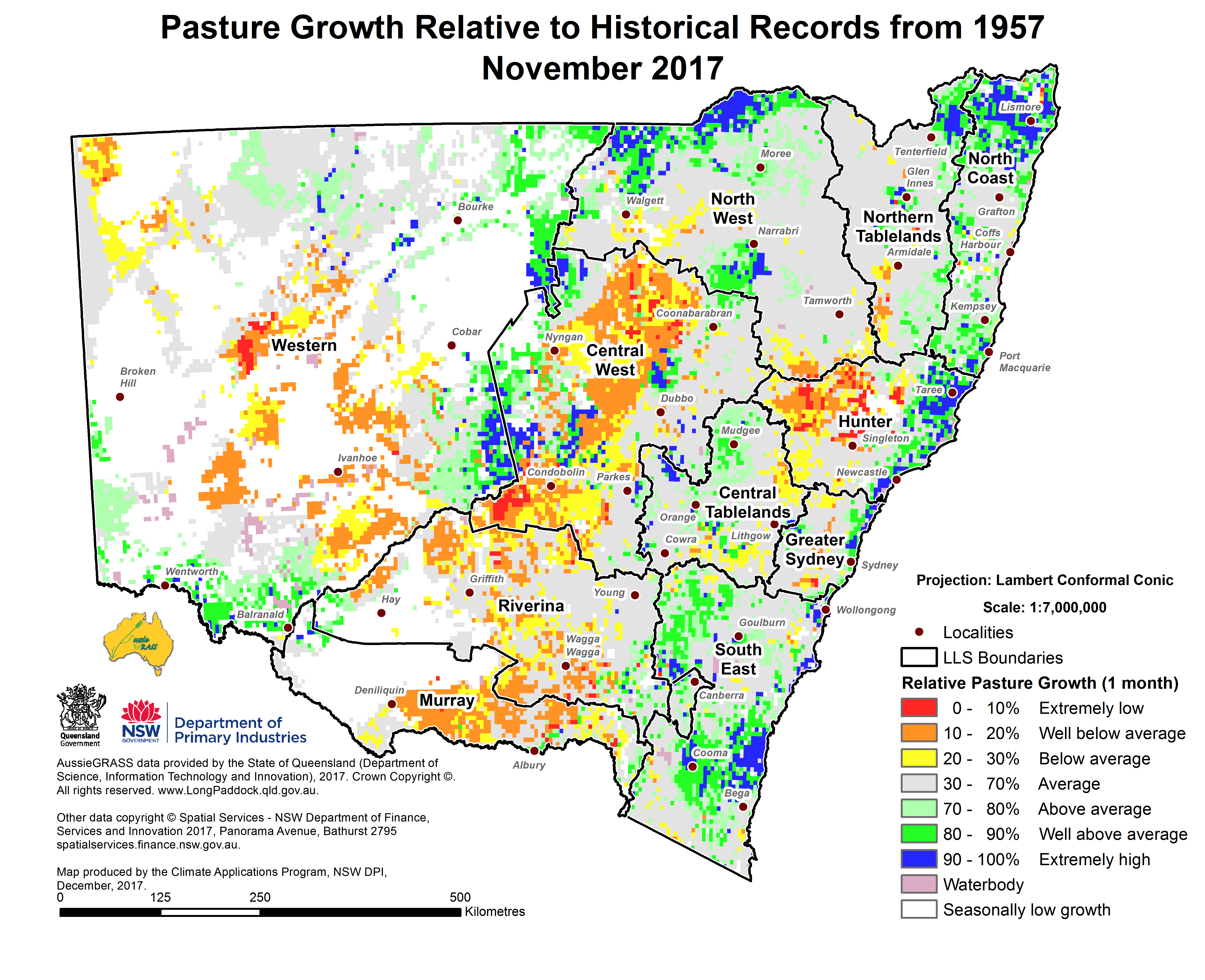
Summer crops benefit from late spring rain
14 Dec 2017

November rain improved summer crop conditions, with 20 per cent of the state receiving above-average rainfall.
Above-average rainfall occurred across the far south west, Murray Valley, south east and scattered areas of the north west, far north coast and south west slopes.
NSW Department of Primary Industries (DPI) Seasonal Conditions Coordinator
Ian McGowen said 73 per cent of the state received near-average rainfall during November.
“Rainfall ranged from 1 mm to 259 mm across NSW during November, with most of the eastern half of state, the south and south west receiving 25 mm -100 mm. Thunderstorms were common, due to easterly winds feeding moist tropical air across the state,” Mr McGowen said.
“The easterly winds also affected daytime and overnight temperatures, which were generally below average in the north east of the state, across the central coast to north coast, Hunter Valley, northern tablelands and areas of the north west.
“During November, topsoil moisture improved across eastern and south eastern NSW and some central and southern areas. Particular improvements in topsoil moisture occurred across areas of the south coast, Monaro, southern tablelands and lower Hunter Valley.
“Summer growing and perennial pastures continued to respond to the rainfall and warm temperatures across most of the slopes, tablelands, Monaro and the coast. However, some declines in growth occurred across areas of the upper Hunter Valley, central west, north west and western Riverina as well as areas of the far west.
“The storms and rainfall in November and early December presented challenges for haymaking across the slopes and tablelands and resulted in some loss of quality.
“The November and early December rain benefited summer crops, improving soil moisture levels and early-season yield prospects for cotton and sorghum. The rainfall encouraged further sowing of sorghum, and increased interest in other summer crops such as mung beans and sunflowers.
“Harvest of winter crops across the north west slopes and plains was virtually completed during November, with only later crops on the eastern slopes yet to be harvested.
“The October-early November rainfall improved yields of later maturing crops across the south east, central west slopes, south west slopes, Riverina and Murray Valley. Yields were greater than expected, compensating to some extent for the extremely dry winter conditions and damaging frosts.
Protein levels of wheat were high and grain quality generally good from crops harvested before the late November rain. Canola oil content has been variable, with lower oil contents in the western areas. In the eastern areas of the state, which were not as affected by the drier weather, canola oil content has been good.
Harvest continued across the central and southern slopes of NSW during November and into December, although the rainfall received resulted in some damage to crops and the downgrading of grain quality
The Bureau of Meteorology’s rainfall outlook for December to February indicates there is a near-equal chance of drier or wetter than normal conditions across most of NSW. Wetter than normal conditions are likely for areas of the south east and central to mid-north coast.
The outlook for daytime temperatures is for a near-equal chance of cooler or warmer than normal temperatures across most of NSW. Warmer than normal daytime temperatures are likely across limited areas of the far south west and far south east.
The Pacific Ocean is in a La Niña event. The outlook from most global climate models suggests that the event will be weak and potentially short-lived, being likely to persist only throughout summer or into early autumn.
The current event is likely to have effects that are much less than the previous strong La Niña event of 2010-12, and is unlikely to result in significantly increased rainfall across NSW. La Niña events can increase the likelihood of longer-duration heatwaves across south eastern Australia.
A range of services and support available to assist farming families and farm businesses to prepare for dry seasonal conditions is available at www.droughthub.nsw.gov.au
Media contact: Anne Brook (02) 6763 1163 or 0477 358 305

